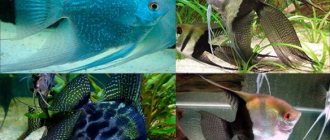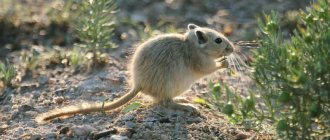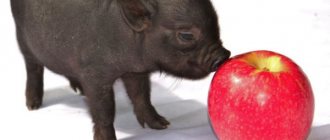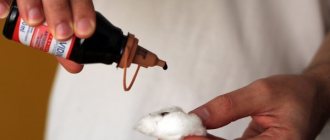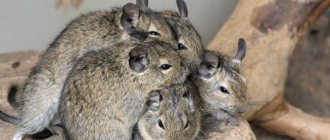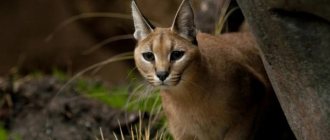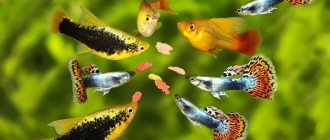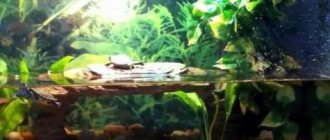Author: stabskapitan
18 November 2021 20:13
Tags: animals interesting to know interesting facts insects scolopendra
20299
23
7
Scolopendras are insects, or, more precisely, arthropods. They live in all climatic regions, but the giant scolopendra can only be found in the tropics; the large scolopendra especially likes to live in the Seychelles, the local climate suits it best.
0
See all photos in the gallery
What does scolopendra look like?
Today there are more than eight thousand varieties of centipedes. They live in different parts of the world. In addition, among them there are waterfowl species that were identified only in 2016. The most popular are the giant scolopendra, ringed, Californian, red and Lucas centipede.
The animal's body consists of 21-25 segments. Each segment has a pair of legs. The head is represented by one plate. It has two antennae and eyes. The first pair of legs acts as jaws. They are used to attack prey. The last two pairs of legs act as an anchor. They also participate in the process of reproduction and when hunting large prey.
Important: each pair of legs has a poison gland. Therefore, upon contact with skin, a reaction similar to a burn may occur.
It is noteworthy that centipedes have the ability to regenerate. If a leg is lost, it grows back in the same place after molting. Visually, you can see which legs the scolopendra has lost - it will be shorter than the others. A centipede grows throughout its entire life.
By color you can find animals of any color. In addition, as the centipede matures, it can change its color. Also, the color of scolopendra depends on its habitat.
Appearance
Externally, the individual looks like a long, dense worm. The color can be black, brown, gray, green, partly blue or orange - it varies depending on the species. Scientists have counted more than 600 species of centipedes living on earth.
By the way, animals are called centipedes for a reason. They have 42-46 legs - the number depends on the number of segments on the body - 21-23, each of which has a pair of legs.
Flexible membranes connect the segments to each other. The chitinous exoskeleton protects the membranes - its layer does not grow. The centipede continues to grow as soon as the molt ends.
The first pair of legs replaces the jaws of centipedes - with its help they capture prey and swallow it. The last pair differs from the others in their large size and makes it easier for the animal to move on the ground and brake.
The head is more like going to the plate. It contains eyes, antennae and jaws. A good sense of touch allows the scolopendra to easily navigate its habitat.
Types of centipedes
There are quite a lot of centipedes and they all differ in appearance and habitat. There are rarer species, but it is worth considering the most common ones, which everyone can encounter.
Common flycatcher or scutigera
The length of the scolopendra scutigera reaches 60 mm. The body is yellow-gray in color, the legs are long and striped. The diet consists mainly of small insects. You can meet the centipede in Africa, Europe, and the Middle East. It is more rarely found in Ukraine, the Caucasus, Moldova, Kazakhstan and Russia.
The common flycatcher prefers dry places, often lives in fallen leaves, but when it starts to get colder, it tends to find shelter. It is in this situation that they often enter homes. In this case, they prefer to hide in toilets, bathrooms and basements.
This type of scolopendra is not dangerous for humans. Due to the structure of its jaws, it simply cannot bite through the skin of a person or pet. In extreme cases, the reaction to a centipede bite is comparable to a bee sting and is manifested by redness and swelling of the skin.
If the scutiger crawls on food products or dishes, it will not cause any harm. In some areas, the centipede is considered very useful, and killing it is prohibited. People try to carefully catch the common scolopendra and take it outside the living space.
Giant centipede - the largest centipede in the world
This species is found mainly in the west and north of South America, as well as on the islands of Jamaica. They also prefer insects in their diet, but large individuals can attack frogs, toads, lizards and even small birds.
The body consists of segments. There are 21-23 of them in total. Colored brown or red. Each segment has a pair of bright yellow legs. The first pair of legs are transformed into jaws. The bite of such a centipede can cause severe pain in a person at the site of the bite, tissue swelling and redness. Common symptoms will be severe weakness and increased body temperature.
The venom of the giant centipede consists of acetylcholine, histamine, serotonin, lecithin, hyaluronidase and thermolysin. For an adult, the poison does not pose a mortal danger, but for a weakened body or a child it can be extremely dangerous. The centipede is part of the group of Australian centipedes.
Ringed scolopendra or Crimean
The most common type. Lives in Southern Europe. Prefers mountainous areas, hiding under stones, in rock crevices, and in cracks in tree trunks. During the day it rarely appears and tries to hide in the shadows. At night he goes hunting.
The diet consists mostly of insects, moths, spiders; large individuals can catch a mouse. It is noteworthy that this type of scolopendra will not refuse to taste its relative.
Externally, the ringed scolopendra may differ in color depending on gender. The age of the centipede also matters. Color varies from brown to yellow. Females are always darker than males. And young individuals are lighter than adults. It reaches 15 centimeters in length. The average life expectancy is about seven years.
Chinese red scolopendra
This species is found mainly in Australia and Asia. It is more socialized and less aggressive. Such labiopods often live in groups, without showing aggression towards their relatives.
It is noteworthy that this type of centipede is used in Chinese medicine as an effective remedy. It is used primarily to treat skin pathologies and injuries.
It has a thin, long body consisting of 21-23 segments with a pair of legs on each. The color varies from deep red to yellow depending on the age of the labiopod. It prefers insects in its diet.
California scolopendra
This species is also called the giant centipede or Texas red centipede. Can be found throughout the United States and Northern Mexico. It is considered the largest individual of this group. The length of the body reaches seventeen centimeters, some individuals grew up to 20 centimeters.
The body consists of 21-23 segments. Each segment has a pair of legs. Habitats are very diverse. It is often found in the Sonoran deserts, which is why it is often called the desert centipede. But despite this, it easily takes root in mountainous areas, on rocks, and in forests.
During the daytime it prefers to hide in the shade and coolness. To do this, select crevices and holes in the ground. During the day it can crawl out of its shelter only in cloudy weather. Hunts more often at night. Prefers insects, small rodents, reptiles and other vertebrates. The centipede bites the victim and waits for the poison to take effect.
Scolopendra Lucas
Found in Southern European countries. Externally it has a red color. The body consists of 21-23 segments with a pair of legs on each. The head is significantly different from other types of millipedes. It has a heart-shaped shape.
The centipede reaches 12 centimeters in length. Thanks to its color, it easily hides among rocks and sand. Therefore, there is always a risk of stepping on it. At the same time, scolopendra is not afraid of people and does not hide from them. It often crawls into homes and tents.
Blind centipedes
One of the tiniest creatures of this group. It reaches only 4 centimeters in length. The color of the body is yellow, very mobile, they prefer to hunt between cracks and in passages in the soil.
They are found in large numbers in the steppes of the Lugansk region. Due to the fact that the centipede spends most of its time underground, the organs of vision have atrophied. But despite this, it is quite agile in hunting.
Scolopendra domestica
Another small species of centipede, the house centipede reaches 3-6 centimeters in length. Unlike other species, it is active during the day. It is distinguished by its enormous speed of movement - up to 40 cm/sec. During movement, the body is raised above the surface, and the legs are quickly rearranged.
On the head there is a pair of eyes with a faceted structure. Due to this, the centipede has a very good overview, which makes it possible to monitor the prey. The centipede sits calmly on the wall, waiting for its prey, and then quickly moves towards it. Long antennae, which are highly sensitive, also help in hunting. Due to them, the centipede easily recognizes smell and touch. After the centipede has caught the victim, it bites it, injects poison and waits until the victim is immobilized. After absorbing prey, the centipede usually hides in a dark place until the food is completely absorbed.
Is it dangerous for humans?
Many people who encounter a centipede in an apartment try to get rid of it, as they consider it dangerous. In fact, this type is even considered useful. It is centipedes that protect the home from harmful insects.
As for humans, it is completely harmless for him. She prefers only insects in her diet. It does not damage furniture, house plants, wallpaper, and so on. There will be no harm from it, only benefit.
The fact is that the centipede's jaws are very weak. They are not capable of piercing human skin. Therefore, even if a scolopendra decides to bite a person for the purpose of protection, the harm will be minimal. The concentration of the poison is very small and it will not cause any harm to humans or pets.
Where does the little scolopendra come from?
If you don’t like being next to a domestic scolopendra, you should figure out why it got into your home. The centipede prefers warm, damp places where there is food. That is, the presence of insects, the same flies, moths is already a reason for a centipede to appear in the house.
It is not always possible to notice the appearance of a centipede. She goes hunting in the dark, moves quietly, and often domestic animals, including cats, react to her, trying to catch a centipede.
How to get rid of centipedes in the house
Despite the fact that this species is called domestic scolopendra, it spends most of its life in the wild. It can be found at the roots of trees, in the foliage. Overwinters between snags and under roots. After the onset of spring, it comes out of hiding to hunt.
In autumn, when the air temperature drops, they can move into living quarters. It is during the cold season that home owners may notice the appearance of a centipede. In this regard, the question arises regarding how to get rid of it.
In order to get rid of house centipedes, you can use the following recommendations:
- Reduce the level of humidity in the room as much as possible, avoid the formation of damp corners, dry the bathroom, non-residential premises (sheds, basements). All premises must be regularly ventilated.
- You can catch flycatchers using sticky traps. They should be located in places where there is a greater likelihood of encountering a centipede and change them as they are filled.
- If only one scolopendra appears in the house, it is enough to carefully catch it and take it outside the house.
Important: house flycatchers, like most centipedes, do not settle in colonies, but live alone.
As for the choice of product, you can use aerosols Raptor, Combat, Raid, gels Sturm, Fas. In addition, it is especially important to create conditions in which it will not be profitable for the centipede to live. Therefore, you should get rid of flies, cockroaches, moths and other living creatures. To do this, it is necessary to seal all seams, cracks and crevices, and use nets on windows and doors. In private homes, foliage should be removed from under the trees so that the flycatcher does not hide in it.
Structural features
Centipedes breathe using tracheas. To maintain moisture during breathing, the spiracles lead into the air sacs, and from them the trachea originates.
The scolopendra's body integument also protects it from moisture loss, since it is covered with an epicuticle, which is flexible and able to repel moisture. The exoskeleton of this arthropod consists of chitin and sclerotin.
The flycatcher also has simple eyes in large numbers and closely adjacent to each other. It is characterized by the presence of 15 pairs of articulated legs of pronounced length, which makes it the fastest among the scutigers and allows it to move along vertical surfaces.
In the domestic scolopendra, the hind pair of legs can exceed the length of the body in length. In front of the scutigera there are long antennae in the shape of whips - they perform olfactory and tactile functions. They consist of 500-600 segments.
The front legs are turned into jaws, with their help the scolopendra captures prey and injects poison into its body. However, the jaws of this scutigera are not strong enough, so it cannot bite through human skin, and its poison is of low toxicity.
The centipede is not aggressive towards humans.
If scolopendra, or scutigera, has settled in the house, then you can be sure that flies and cockroaches will soon stop bothering the owners.
A domestic scolopendra can live in secluded corners of your home, and at night it can crawl onto your pillow.
The body length of an adult reaches 60 mm. Scolopendra is yellowish-gray or brown in color, also has three red-violet or bluish stripes along the body, and the legs are also striped.
The body is flattened and divided into 15 segments, each of which has a pair of legs.
Where does scolopendra live?
Considering the huge diversity of species, we can conclude that scolopendra lives almost everywhere. Predatory species are more often found in South America, Australia, North America, but can also be found in Russia, Kazakhstan, Ukraine and Moldova. In search of shelter, they often crawl into residential buildings, especially in the cold season. However, they prefer basements, bathrooms and other rooms with high humidity.
On the street, centipedes often hide in fallen leaves, under tree roots; some species live under stones and even in the ground. Centipedes are especially numerous along the banks of water bodies. Habitats are explained by the preferences of centipedes. They love high temperature and moisture. Therefore, at low temperatures they look for shelter. In addition, hunting in the wild is made more difficult by the fact that insects also disappear from sight, but in residential areas you can still find cockroaches, flies, moths, and so on.
Important: it is worth paying attention to the fact that the vision of centipedes is extremely poorly developed. They can only distinguish between bright light and complete darkness.
Brief description of scolopendra
So, we have figured out the taxonomy of centipedes. All that remains is to describe them, although this is very difficult. The fact is that there are about 600 species of centipedes in the world, and sometimes they differ significantly from each other.
The vast majority of species live in tropical and subtropical regions of the Earth, where winter never occurs. The largest individuals, for example, the giant Australian scolopendra, which can grow up to 30 cm in length, also live there, “in the warm environment.” She even attacks small chicks and toads!
Species living in temperate latitudes are much smaller, usually no more than 8–12 cm. In the countries of the former Union they are found in the south: in Central Asia, Transcaucasia, even in Crimea and Stavropol. However, some of the smallest species can be found all the way to the Moscow region, although they are rare in these parts.
All centipedes have an elongated, worm-like body with an abundance of tiny legs. The front pair of legs of scolopendras has degenerated into claws, which are called jaws. These claws have ducts for the passage of poisonous liquid.
All centipedes lead a predominantly underground, hidden lifestyle. They see almost nothing, distinguishing only between day and night. Under the ground, this agile animal successfully hunts for worms, larvae, and small beetles, using ready-made passages for movement. Although she is capable of digging her own holes!
At dusk, centipedes often come to the surface, hunting for small insects. They are very secretive, love to hide under stones and in crevices in the ground. This instinct often drives them into human dwellings, especially into tents and under awnings.
Scolopendra lifestyle
You can distinguish any type of scolopendra by its characteristic appearance. As already mentioned, centipedes are found both in the wild and in residential areas. In addition, some hobbyists keep these predators at home as pets.
The diet of centipedes includes flies, crickets, worms, cockroaches, moths; large individuals can prey on lizards, small birds, frogs and toads. Millipedes that live in North and South America will not refuse to feast on bats.
During a hunt, the centipede freezes on the surface, waiting for its prey. Due to its compound eyes, it has a wide field of vision, which allows it to closely monitor insects and vertebrates. The centipede also moves very quickly, which allows it to overtake the prey. After this, it pierces its body with its front legs, covers the prey with its entire body and releases poison.
The venom of centipedes is located in the front jaws. Each species has its own concentration of the substance, so the bite of some is not terrible, while others cause a violent reaction in the body. After the centipede has bitten the victim, it begins to slowly eat it. Tearing off pieces from the victim's body with her feet, she sends them down the wide throat. The entire absorption process takes a long time.
The composition of scolopendra venom includes acetylcholine, histamine, lecithin, and serotonin. After the poison enters the tissue, swelling forms. The poison causes paralysis of the victim's body. Due to this, the centipede can calmly start absorbing food.
It is noteworthy that not all centipedes are poisonous. This can be determined by the color of the centipede. The brighter the color, the more poisonous the individual will be. But despite this, centipede venom is not particularly dangerous to humans. In terms of harmfulness, it can be compared to a bee sting. In addition, centipedes do not attack people or pets. A scolopendra can bite as a last resort for the purpose of self-defense.
Scolopendras begin to reproduce only after reaching two years of age. The male develops a sac filled with seed, or a spermatophore, at the end of his body. It is enough for the female to crawl over the male and draw the liquid into her genitals, resulting in fertilization. After a few months, the female will begin to lay eggs.
One clutch often contains up to 120 eggs. The female, up to a certain point, protects the clutch from enemies and surrounds it with her paws. After the small centipedes hatch from the eggs, the mother leaves the shelter. The larvae then grow and molt several times, gradually acquiring the appearance of an adult.
Important: in Crimea there are scolopendras that do not need a male to reproduce, that is, they reproduce parthenogenetically.
The average lifespan of any species of scolopendra is 7 years.
Danger to humans
If a flycatcher lives in an apartment or house, it will not harm either food or furniture. Scolopendras are not characterized by aggressive behavior; they can bite a person only in self-defense.
The bite of a domestic scolopendra is not dangerous - their venom is quite weak, the bite site hurts much less than, for example, with a bee sting.
The poison of this arthropod does not pose a serious danger to pets - cats or dogs. Due to their ability to destroy insects, centipedes are useful to humans, but many decide to destroy them, since centipedes have a rather unpleasant appearance.
In some countries, scolopendras, on the contrary, are protected.
However, if you have a scolopendra as a pet, then you should not let it out, much less have contact with it. The fact is that large individuals have strong mandibles that can kill even a rodent such as a rat or lemming .
Such individuals are truly dangerous to human health, so they must be isolated in a terrarium.
Why is scolopendra dangerous for humans?
Considering that the front legs and legs contain poison, it is safe to say that centipedes are poisonous. Moreover, the brighter the color, the stronger the poison their body releases. Some millipedes bite in proportion to a wasp or bee. But there are species whose bite can be compared to 20 bee stings at once.
Despite the fact that centipede venom does not lead to death, a fatal outcome cannot be ruled out. The fact is that a person or pet can have an allergic reaction to the poison. Such cases are indeed recorded in history.
Interesting: books describe scolopendra up to 33 centimeters long. Its bite is believed to be fatal. But there is no documentary evidence of this.
Large individuals are mainly found in Brazil and Australia, but in Russia you can find centipedes up to 14 centimeters long. These are mainly ringed scolopendras. They go hunting in the dark and do not attack humans. Of course, if, while collecting firewood in the forest, you grab a log in the place where the centipede is sitting, it can sting in self-defense. But this bite will not be fatal.
Thus, the greatest danger is posed by the giant scolopendra living in South America. But you should stay away even from local centipedes, since there is no guarantee that the body will not overreact to the poison.
A scolopendra bite manifests itself as follows:
- Increased body temperature over 38 degrees.
- Severe pain at the site of the bite.
- Redness of the skin and severe swelling of the tissues.
- Signs of general intoxication.
This condition can persist for 2-3 days, gradually the condition will improve even without treatment.
It is noteworthy that females secrete more concentrated poison, so their bite is more dangerous than the bite of a male.
The benefits and harms of flytraps
Knowing what a centipede looks like and seeing it in your apartment, country house or private house, you should not be scared and immediately try to destroy it. This creature does not cause any harm to wallpaper, clothing, furniture or kitchen products. It will never attack a person for no reason. However, few owners would agree to live next to such unsightly and nimble neighbors, so they try to get rid of them.
Centipede and centipede
If house flycatchers are found on the territory of a personal plot or in beds, then there is no need to fight them at all, because there they will be useful, regularly destroying garden pests and their larvae.
On a note!
The most poisonous centipedes are scolopendras, which belong to the same class of arthropods; they live only in the southern regions of Russia, as well as in tropical countries. The larger its size, the more toxic the bite and its negative consequences will be.
Large centipedes and centipedes up to 20 cm in size are also found in nature, but they live in the countries of Asia, America and others, preferring a warm tropical climate.
Symptoms of intoxication after a centipede bite (photo below):
- severe pain at the site of the bite, itching and burning;
- swelling and redness of the skin;
- swollen lymph nodes;
- headache, palpitations, nausea and vomiting, anxiety.
Centipede bite
If such signs appear, it is necessary to treat the wound with a disinfectant and take antihistamines.
Scolopendra bite
Immediately after contact with a centipede, a person may complain of the following sensations:
- Severe burning sensation at the site of contact.
- Redness of the skin.
- Tissue swelling.
- Increase in body temperature to 38-39 degrees.
- Enlarged lymph nodes near the bite site.
After a bite from large species of scolopendra, tissue necrosis, deterioration within 2-3 days, severe weakness and intoxication may be observed. Even though large specimens of centipedes do not live in Russia, Belarus, Ukraine and Kazakhstan, it is always worth remembering that some exotic lovers keep them at home, so no one is safe from encountering a poisonous scolopendra.
If you still cannot avoid the bite, first aid should be provided immediately. To do this, wash the area of contact with the legs or the bite with soap and water. After this, wipe with alcohol. It is recommended to apply a sterile bandage for 10-12 hours. After the specified time it should be changed. For 2-3 days, rest more, avoid stress, give up alcohol. If the condition worsens, consult a doctor.
If a pregnant woman, child or elderly person has suffered from a bite, a doctor should be consulted immediately, without waiting for changes in the condition. Remember that the bite, although not fatal, can be extremely dangerous for some people.
For severe pain, painkillers can be used. A piece of ice also works well to relieve swelling. It would be a good idea to take an antihistamine.
Home keeping of scolopendra
As already mentioned, some exotic lovers keep scolopendra at home. Centipedes are not picky when it comes to keeping them and anyone can handle their care. The only thing to keep in mind is that you shouldn’t keep them in pairs. These are still solitary animals, and for two centipedes you will have to equip two terrariums.
The optimal temperature for scolopendra is 25-27 degrees. There should be a high level of humidity. To do this, a drinking bowl is installed in the terrarium, and the substrate is watered. For the latter, coconut substrate with sand in a 1:1 ratio is suitable. It is laid in a layer of 7 centimeters. This way the centipede will be able to dig holes for itself to hide in during the daytime.
For an adult large centipede, a terrarium measuring 30x40x30 centimeters is sufficient. Please note that the size is indicated without the thickness of the soil; accordingly, another 7 centimeters should be added in height. Otherwise, the centipede will be able to crawl out of it.
The most convenient are terrariums that open from the top, so the centipede will not be able to escape. Driftwood, stones, and pieces of bark are suitable as decoration. That is, everything that imitates the natural habitat.
In the wild, the centipede feeds on insects and small vertebrates. At home, you can maintain the same diet. It is enough to feed the centipede once a week. At the same time they give 4-5 crickets. They can be replaced with worms, beetles, cockroaches.
Naturally, you shouldn’t let her go hunting in the house, otherwise you won’t see her again.
Scolopendra nutrition
It was already mentioned earlier that scolopendras are predators. In the wild, these insects prefer small invertebrate fauna representatives for lunch, but giant individuals include small snakes and small rodents in their diet. They also prefer frogs as a French delicacy. Advice: The ringed scolopendra has a less dangerous poison compared to its relatives from the tropics.
Therefore, lovers who want to keep these cute centipedes at home should first buy a centipede that is less dangerous to humans. Then, having gotten to know this God's creation better, you can purchase a larger pet. Centipedes are cannibals by nature, so it is advisable to keep domestic centipedes in different containers, otherwise the stronger one will dine on the weaker relative.
Since we are talking about molting, you should know that scolopendra can change the old exoskeleton for a new one, especially in cases where it decides to grow in size. The fact is that the exoskeleton consists of chitin, and this component is not naturally endowed with the gift of stretching - it is inanimate, so it turns out that if you want to become bigger, you need to throw off your old clothes and change them to new ones. Young animals molt once every two months, and adults twice a year.
Latest articles about gardening
Why do cherry trees drop unripe fruits?
Why do pepper ovaries fall off?
Why do you dream about scolopendra?
Given the unsightly appearance of centipedes, many believe that seeing one in a dream means trouble. But in practice, dreams with scolopendras are often positive.
Simply seeing a centipede in a dream indicates that you are in pursuit of imaginary values. It may also indicate betrayal. If you often see centipedes in your dreams, take a closer look at the people around you. Perhaps there are envious people among them. When talking with people, try to restrain yourself and not tell anything personal about yourself, much less about your plans. You should not fall into despair, believing that someone has definitely betrayed you. Scolopendra in a dream is a sign that you need to take a closer look at those around you and nothing more.
If the centipede was exaggerated in a dream, had enormous dimensions and looked like a fanatical monster, we can conclude that you are afraid of finding yourself in an extremely difficult situation. And the larger the centipede in a dream, the stronger the fear.
If you dreamed of a group of centipedes, you can assume financial losses. After such a dream, it is better to think several times and not take on new things if you are unsure of their outcome.
Of no small importance is what the centipede did and what the person dreaming did. If scolopendra crawled over the body, then troubles may await you in life, which will result in a nervous breakdown. You should be prepared for this and, if possible, warn.
If a scolopendra bites, this may indicate a deterioration in health in real life. Please note that the more painful the centipede bite was, the more serious diseases can be detected.
If in a dream a scolopendra bites a person sitting next to you and blood appears on the wound, then we can conclude that you are a very sensitive person. You express compassion to the person next to you and may take his problems too close to your heart.
If you killed a centipede in a dream, you can prepare for a trip or trip. According to another dream book, this indicates getting rid of existing problems. The size of the centipede also matters here. The larger it is, the larger problems will be solved.
In addition, killing a centipede may also indicate drastic changes in life. Thus, seeing a centipede in a dream means preparing yourself for changes, be it with your health or with life in general. Such a dream prepares a person in advance and makes it possible to react correctly to changes that arise.
